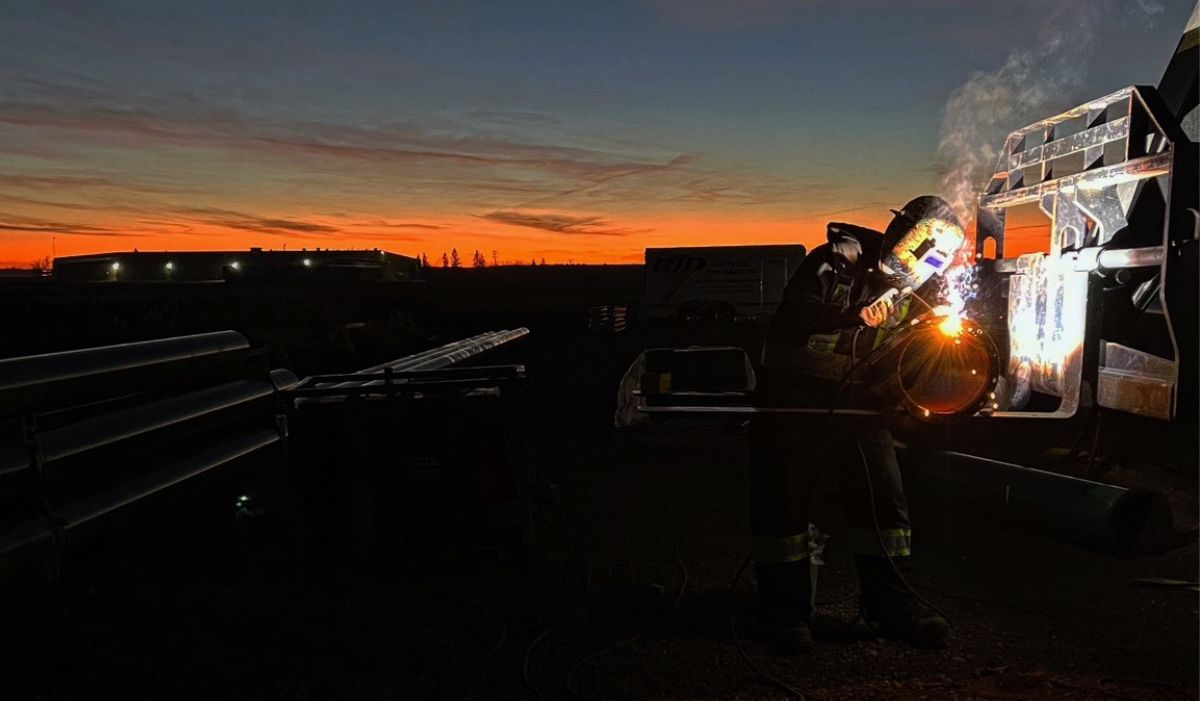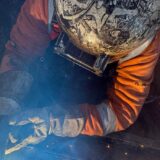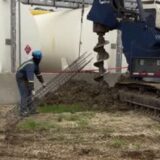15 Must-Have Tools for Industrial Welding Success
Industrial welding is an art and science that requires precision, skill, and the right tools. Whether you’re a seasoned welder or just starting out, having the proper equipment can make all the difference. In this list, we’ll explore some essential tools that every industrial welder should have to ensure safety, efficiency, and success.
1. Reliable Welding Helmet
A good welding helmet is essential for protecting your eyes and face from sparks and harmful UV rays. Look for helmets with auto-darkening features for added convenience and safety. This feature automatically adjusts the visor’s tint to match the level of light being emitted during welding, ensuring your eyes are protected at all times. A helmet with a clear viewing area will also enhance visibility, making it easier to lay precise welds. Today’s helmets come with increased comfort features, such as adjustable headbands and padded interiors, which allow long-term use without discomfort.
2. Durable Welding Gloves
Your hands are your most valuable tools in welding, so protect them with high-quality leather gloves that offer heat resistance and dexterity. When selecting a pair, ensure they fit snugly, providing sufficient grip while still allowing for a range of movement. Leather gloves offer better protection against heat and sparks compared to synthetic materials, which can melt when exposed to high temperatures. Thick cuffed gloves also shield the wrists, preventing burns from hot metal spatter.
3. High-Quality Welding Machine
Investing in a reliable welding machine is crucial for achieving the best results. Choose a machine that suits the type of welding you do most frequently, whether it’s MIG, TIG, or stick welding. Each method has its ideal applications, and selecting a versatile machine can significantly streamline your workflow. Ensure it has a steady power output, as fluctuations can compromise weld integrity. Pay attention to duty cycle ratings; a higher duty cycle indicates the machine can operate for longer without overheating, which is essential for large projects.
4. Welding Clamps for Stability
Clamps are indispensable for holding your workpieces in place, ensuring stability and precision in your welds. They come in various shapes and sizes—C-clamps, F-clamps, and locking clamps—each serving unique functions for different types of welding tasks. Selecting the right clamp will depend on the dimensions and weight of the materials you’re working with. Properly securing your materials reduces the risk of movement, which could lead to misaligned sections and weak joints.
Take care to regularly check clamping tools for wear and tear. Faulty clamps can quickly lead to accidents or compromised welds, so it’s crucial they are in prime condition. Remember, the stability provided by welding clamps not only ensures precision but also safety, as unsecured materials could shift and cause injury.
5. Portable Welding Table
A portable welding table provides a sturdy and convenient surface to work on, allowing you to take your projects anywhere. Look for tables with robust, adjustable legs to accommodate different working conditions and environments. Some tables feature slots and holes that facilitate fast and secure clamping, making your jobs more efficient. A heat-resistant surface is a must, as this prevents warping and damage from hot metals. For added versatility, consider a table with wheels so it can be easily moved around your workspace.
6. Wire Brushes for Clean Joints
Wire brushes help remove slag and debris from weld joints, ensuring a clean, smooth surface for an optimal weld. Keeping surfaces clean is critical as foreign particles can impede weld quality, leading to weaker joints. These brushes come in manual and power tool versions, with varying degrees of stiffness. For thorough cleaning, a wire brush with bristles that can withstand the rough metal surfaces is ideal. A clean workpiece joins more effectively, contributing to overall structural integrity.
7. Angle Grinder for Versatility
An angle grinder is a versatile tool that can be used for cutting, grinding, and polishing metals, making it a must-have for any welder. Fitted with different types of grinding discs or blades, an angle grinder can handle a range of tasks from shaping welds to cutting through thick sheets of metal. Look for models with variable speed controls to perform delicate tasks and robust jobs all the same. The portability of angle grinders allows them to be used in various locations, making them incredibly versatile and practical.
With their power, angle grinders can quickly become dangerous if not used with care. Always use safety goggles and gloves when operating one, and ensure the workspace is clear from flammable materials due to the sparks they emit. Learning proper handling techniques is also vital to prevent any kickback, which could cause injury or damage to your work.
8. Welding Magnets for Positioning
Welding magnets are useful for holding metal pieces together at precise angles, simplifying the welding process and enhancing accuracy. They act as an extra pair of hands, freeing you to focus on achieving a flawless weld. Choose magnets capable of holding different shapes and weights; some even come with adjustable angles to fit various tasks. With strong magnetic fields, these tools ensure pieces don’t drift apart during welding, which is critical in preventing misalignment and maintaining structural integrity.
9. Measuring Tools for Precision
Accurate measuring tools, such as tape measures and calipers, are essential for ensuring your projects meet exact specifications. Precision in measurement ensures that components fit together flawlessly, avoiding costly errors and material waste. Calipers offer detailed measurements in both metric and imperial units and are useful for checking the dimensions of materials before and after welding. Leveraging digital calipers can offer even more accuracy and ease of reading. A reliable tape measure is indispensable for daily use, with durable tapes that withstand the rigors of a workshop environment.
10. Welding Rods and Electrodes
Choosing the right type of welding rods and electrodes for your projects ensures strong, durable welds. Different types of electrodes cater to various materials and environments—some are suited for outdoor use, while others excel in controlled settings. The strength and quality of your weld are directly affected by the choice of electrodes as they influence penetration and the final bead appearance. Familiarize yourself with the compatibility of different rods with your welding machine, and keep multiple types handy to switch as needed for different projects.
11. Chipping Hammer for Slag Removal
A chipping hammer is crucial for removing excess slag and revealing pristine welds beneath. After welding, slag often covers the bead, masking potential defects and making inspection difficult. The pointed end of a chipping hammer breaks away these deposits, while the flat end smooths out any remnants. This tool is ergonomic and easy to handle, allowing for efficient post-weld clean-up. Regular chipping and cleaning improve weld durability and appearance, providing a professional finish.
12. Welding Apron for Full Protection
A welding apron shields your clothing and skin from sparks and molten metal, providing full-body protection. Made from heat and flame-resistant materials like leather or heavy-duty fabric, aprons are essential for the safety standards of any welder. Adjustable straps ensure a comfortable fit, enabling full motion without constriction. Additionally, aprons often feature pockets to hold small tools and accessories, enhancing convenience and productivity on the job. An apron not only provides safety but also helps keep clothes clean from soot and debris.
13. Safety Glasses for Extra Protection
In addition to a helmet, safety glasses offer an extra layer of protection for your eyes from flying debris. Welding can create projectiles and debris, even from grinding and chipping activities outside direct welding tasks. Safety glasses come in several styles, including wrap-around and side shield designs, which offer comprehensive eye protection. Keep several pairs on hand—scratches and wear over time can impair vision, so it’s vital to replace them when signs of damage appear to maintain optimal security.
14. Cutting Torch for Metal Shaping
A cutting torch is essential for shaping and cutting metal, allowing for greater flexibility in your projects. With torches capable of slicing through substantial thicknesses, this tool provides precise cuts needed for custom fabrications. Controlling the gas mixture in your torch results in cleaner cuts by mitigating excess slag production. This precision leads to smoother edges requiring less post-cut cleanup. Safety is paramount with oxy-fuel torches; ensure proper training and use of flashback arrestors to prevent hazardous accidents.
15. Welding Fume Extractor for Health Safety
A fume extractor is vital for maintaining air quality in your workspace, protecting your health from harmful fumes. Welding generates smoke and particulate matter that can be damaging if inhaled over extended periods. Installing an effective extraction system helps to significantly reduce these risks by capturing and filtering out these contaminants at the source. Look for portable units if mobility is needed, or fixed units optimized for larger workspaces. These systems not only contribute to a safer environment but also align with occupational safety regulations, ensuring compliance with health standards.



